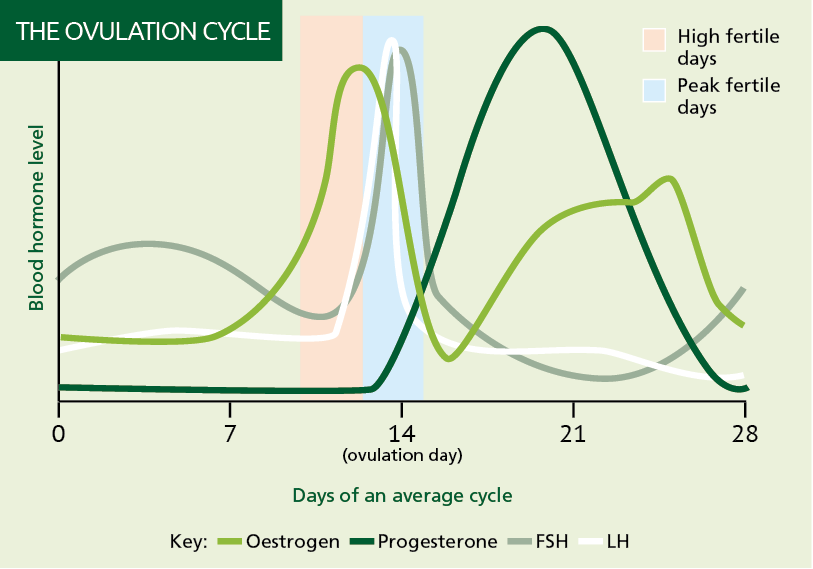A woman’s fertility and her ability to conceive are related to the hormone changes that occur during her menstrual cycle. A typical menstrual cycle lasts around 28 days, but can vary between 21 and 40 days, depending on the individual.

Day one of a woman’s cycle is the day she starts her period. At this point, a number of eggs start to develop in the ovaries due to a hormone called the follicle stimulating hormone (FSH). As the cycle progresses, the eggs continue to grow and one, but occasionally more, will reach a point where it’s mature enough to be released. Meanwhile, levels of the hormone oestrogen are rising, and this causes the lining of the uterus (womb) to thicken in anticipation of a pregnancy.
Regardless of the length of a woman’s monthly cycle, ovulation – when the egg is released from the ovary – usually occurs between 10 and 16 days before the start of her next period. In a 28-day cycle, this is often around day 14. What varies is the time between the woman’s last period and ovulation. This is why calculating the optimum time to conceive is not always straightforward.
Ovulation is triggered by a sudden rise in luteinising hormone (LH). During ovulation, the ovary releases an egg, which enters the fallopian tube and travels towards the uterus. At this time, the hormone progesterone prepares the lining of the uterus so that it is spongy, thick and rich in nutrients. If the egg is fertilised by sperm, it is implanted in the wall of the uterus and pregnancy begins. At this time, another hormone is produced: human chorionic gonadotropin (hCG). This is the hormone that is detected by pregnancy tests.
If the egg is not fertilised, it passes through the fallopian tube and out through the vagina, along with the lining of the uterus, which is shed when hormone levels drop. This is the woman’s period, and marks the start of the next cycle.
Sponsored
 Sponsored education
Sponsored education
The role of nasal cleansing in protecting against colds and flu
Learning for the pharmacy team
 Sponsored education
Sponsored education
Challenge your thinking on warts and verrucas
Discover different treatment options for warts and verruas and when to recommend them to your customers, based on their individual needs
